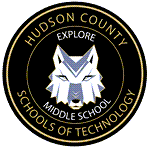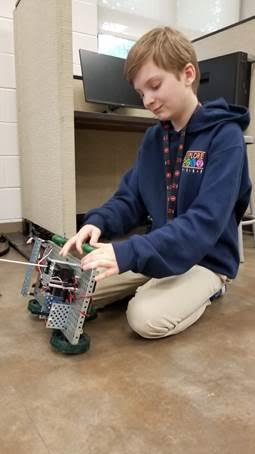The First Year students at Explore 2000 Middle School spent the week of May 9, 2016 working on the Urban Watershed Education Program. Part of the New Jersey department of Environmental Protection, the program begins with a day in the classroom. The students prepared for their field experience with lessons in map reading, learning to identify the local waterways, estuaries, bioaccumulation, watersheds and identifying water species that are under NJDEP Fish Consumption advisories.
Global climate change and the effect it will have on estuaries was discussed along with some ways the students can help to reduce energy consumption. Life forms found in local waterways were discussed as well and the species that are not safe to eat were pointed out. They also learned about the food chain and health effects from eating fish and crabs contaminated with pollution.
On the second day of the program, students traveled to the local waterways to engage in activities that showed how pollution occurs and how it is affected by a watershed. They learned how citizens can reduce and prevent pollution. Dariya Kubska said, ” I always hear about pollution, but to see it up close is different. It makes me think about what our generation is doing to our planet.”
And eco-tour by boat was conducted by the Hackensack RiverKeeper. The students saw how people meet nature in an urban waterway as they learned how to coexist in harmony. The students observed and conducted tests of the water, learning to monitor the levels of healthy and harmful chemicals. The students learned what is needed for water to sustain life. Tests included dissolving oxygen, nitrates, phosphates, temperature, turbidity and salinity. Amanda Zweifler commented, “I never knew there was so much science behind water.” Groups compared their results and discussed how results can vary from one location to another.









